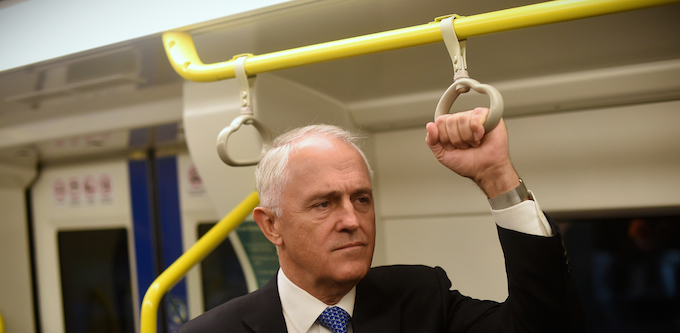
The federal government’s National Innovation and Science Agenda has a weak evidential basis, with unclear definitions of what was meant to be achieved and why, argues a report released by the Australian National Audit Office on Wednesday.
Auditor General Grant Hehir’s latest findings on the the Turnbull government’s headline-grabbing, $1.1 billion National Innovation and Science Agenda (NISA) will do nothing to quell wariness about the excited proclamations made about innovation.
Read more: Atlassian co-founder Mike Cannon-Brookes questions if the innovation agenda is dead
“Much of the advice was general in nature and did not present quantitative or in-depth analysis of problems, expected impacts or how outcomes would be measured,” the report states.
“A number of important matters were not addressed in the advice to government, including implementation risks, governance, and evaluation arrangements,” says the auditor.
“A number of the proposals that involved significant expenditure aimed at transforming parts of the innovation system relied on assertions rather than evidence.”
The lack of articulation about how outcomes would be measured makes it difficult to know what success should look like — not to mention whether the issues the agenda is meant to fix are worth targeting at all.
There was insufficient evidence to demonstrate whether the four main problems the government aimed to address were the right ones.
The NISA identified four “pillars” that act as barriers to innovation in Australia:
1. Culture and capital — there is currently a low appetite for risk and early stage capital investment and Australia lags on new-to-market investment, says the government;
2. Collaboration — there are weak incentives to commercialise research, it asserts. Australia is ranked last in the Organisation for Economic Cooperation and Development (OECD) for research/industry collaboration;
3. Talent and skills — “the world is changing, and our workforce and economy need to change with it to reap opportunities”; and
4. Government as an exemplar — “government services can be more efficient and provide better services through innovation”.
Although this provided the backbone of the strategy, the advice provided to government “provided limited evidence as to why these four areas were the major barriers in Australia’s innovation system,” ANAO says. The departments involved argue these positions were arrived at after extensive consultation and previous experience.
Modelling could not be undertaken because the funding provided was too small and disparate to register under thresholds used by the Treasury.
Monitoring and reporting arrangements “have, in most respects, been effective”.
“However, in a number of cases, the accompanying ‘traffic light’ ratings provided a more optimistic view of progress than was supported by the evidence. This included seven measures that did not meet the publicly announced timeframe but were not rated appropriately,” the report notes.
In December 2015, Prime Minister Malcolm Turnbull announced the NISA as a policy statement on innovation and science, and a package of 24 measures costed at $1.1 billion over four years.
While innovation was made a centrepiece of Turnbull’s early prime ministership and the government’s 2016 election campaign, it has vanished from the radar after failing to impress voters.
The development of the agenda was assisted by the Department of the Prime Minister and Cabinet and a taskforce set up within PM&C, which received input from other entities. Nine portfolios are involved in implementing the agenda, supported by a governance framework that includes central oversight by a delivery unit operating in the Department of Industry, Innovation and Science, and an interdepartmental implementation committee. An independent body, Innovation and Science Australia, was established under the NISA to provide strategic advice to government on the broader innovation system.
This article was first published by The Mandarin.
Follow StartupSmart on Facebook, Twitter, LinkedIn and iTunes.


COMMENTS
SmartCompany is committed to hosting lively discussions. Help us keep the conversation useful, interesting and welcoming. We aim to publish comments quickly in the interest of promoting robust conversation, but we’re a small team and we deploy filters to protect against legal risk. Occasionally your comment may be held up while it is being reviewed, but we’re working as fast as we can to keep the conversation rolling.
The SmartCompany comment section is members-only content. Please subscribe to leave a comment.
The SmartCompany comment section is members-only content. Please login to leave a comment.